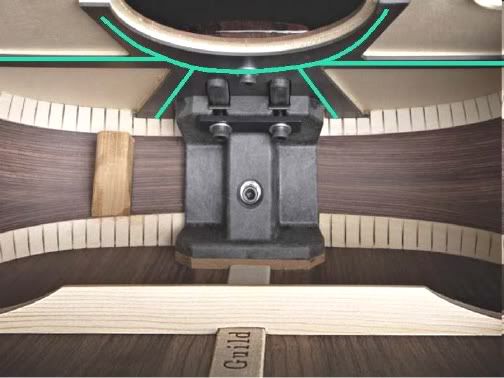Nigel Wickwire
Member
Roughly from the late eighties to the late nineties and maybe longer, Guild used a heavy plate sound hole reinforcement on some guitars. A pentagon-shaped piece that completely surrounds the sound hole.
Telenator touches on it briefly in the thread about his D15 rebuild:
http://letstalkguild.com/phpBB2/viewtopic.php?f=5&t=16537&start=0
Here is one of Telenator pic's (used without permission):

What is the general consensus of the value of this Reinforcement?
Is my time range correct? Or did they use them longer than that?
Edit: Was this used only on Dread's, or did this plate appear on other body styles?
Does it effectively turn a solid wood top into a plywood top, thereby diminishing the tone?
Or does in provide needed strength, reducing the chances of top cracks, particularly along the neck?
Anyone have any thoughts to share?
~nw
Telenator touches on it briefly in the thread about his D15 rebuild:
http://letstalkguild.com/phpBB2/viewtopic.php?f=5&t=16537&start=0
Here is one of Telenator pic's (used without permission):

What is the general consensus of the value of this Reinforcement?
Is my time range correct? Or did they use them longer than that?
Edit: Was this used only on Dread's, or did this plate appear on other body styles?
Does it effectively turn a solid wood top into a plywood top, thereby diminishing the tone?
Or does in provide needed strength, reducing the chances of top cracks, particularly along the neck?
Anyone have any thoughts to share?
~nw

